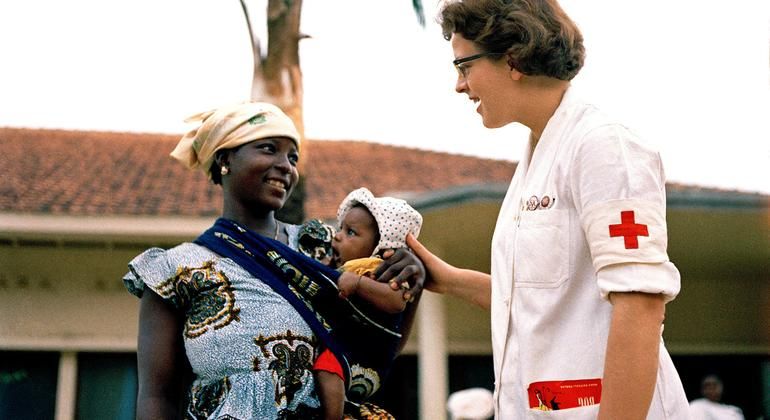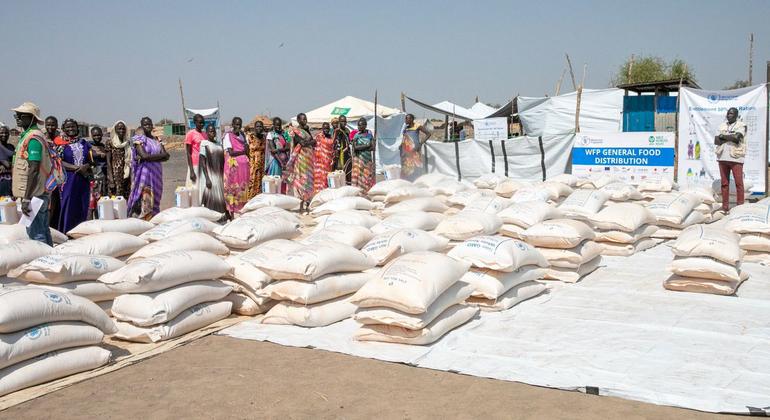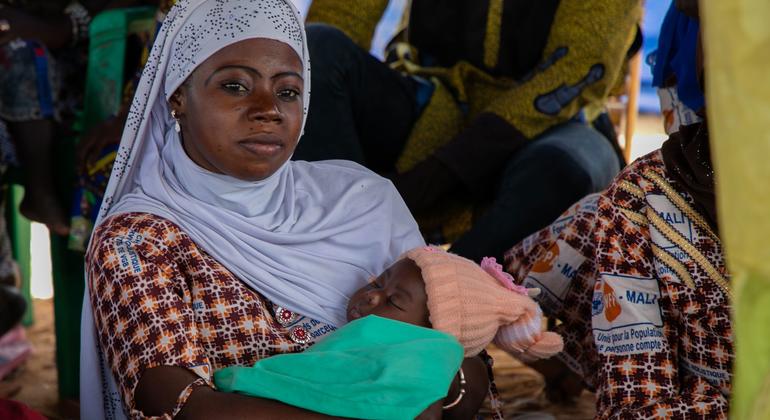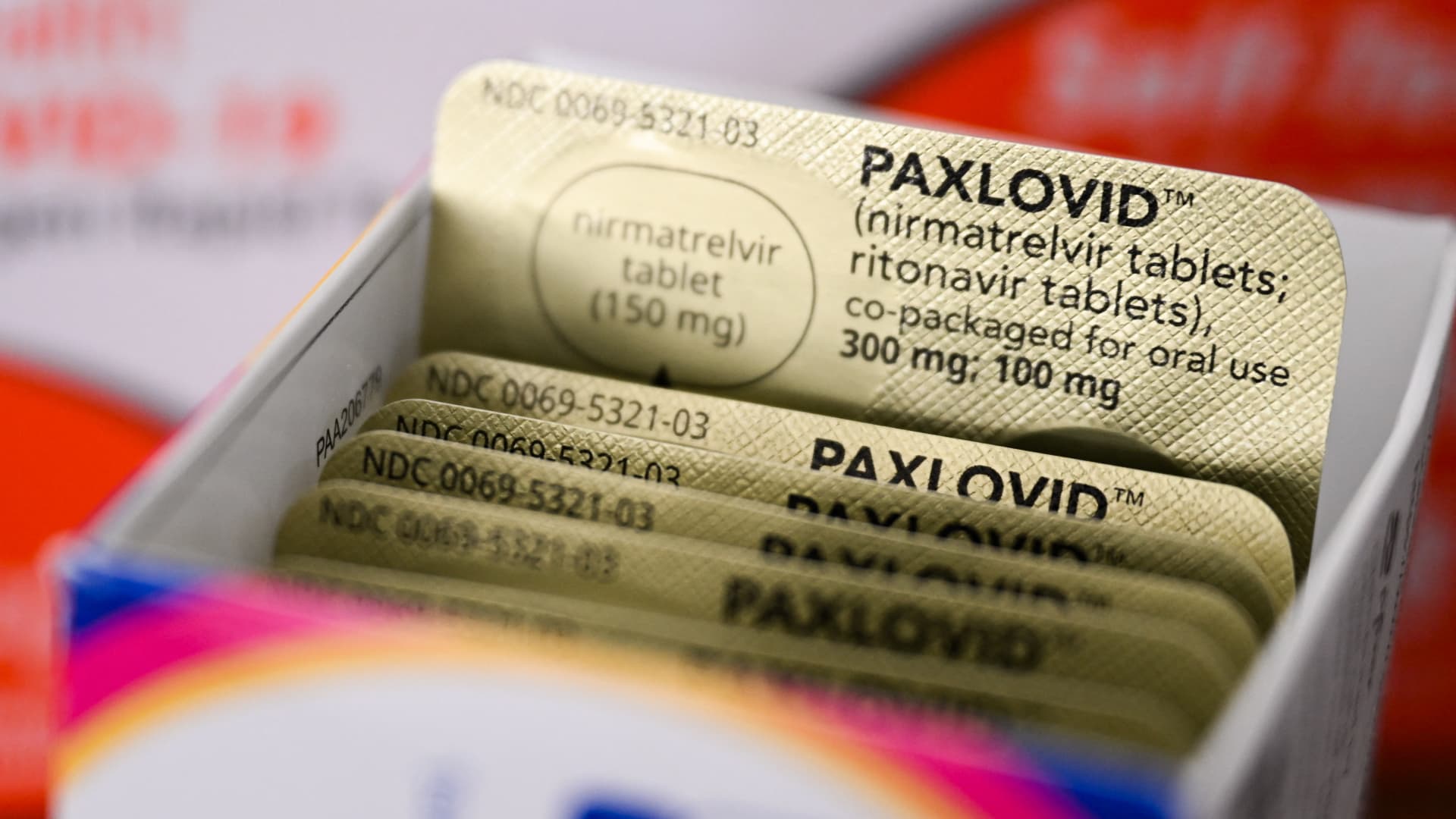On the International Day to Eradicate Obstetric Fistula, celebrated annually on May 23, we take a look at the important role of midwives and tune in to the 1963 UN Radio report, The magic suitcasenarrated by Hollywood star Jack Benny.
The radio and television host joined the United Nations Children's Fund (UNICEF) in the 1960s to raise awareness about reproductive health care and the key role midwives played around the world, especially where infant mortality was high.
Benny takes listeners to Thailand, following the story of a family and the happy birth of a healthy baby after a local midwife arrived by bicycle with her own magical suitcase.
Listen to the full episode of UN Radio Classics here.
In 1954, workers assemble UNICEF midwifery kits in a warehouse in Jersey City, United States, preparing them for shipment to countries with high infant mortality rates. (archive)
Part of UNICEF's program to help women give birth safely included training midwives and sending what Mr. Benny called “magic suitcases” around the world.
In the photo above, from 1954, Yupa Sookchareon (second from left) was testing a fetal stethoscope from one of 14,000 aluminum midwife kits that UNICEF had been preparing to send to practicing midwives in 27 countries in Asia. Middle East, Europe and Africa. and Latin America.
Ms. Sookchareon, a nurse studying at the New York City Birth Center Association on a six-month scholarship from the Government of Thailand, would return to the Bangkok Sanitarium and Hospital as a midwife training supervisor.
Meanwhile, midwife kits were being assembled in a Jersey City warehouse at a rate of 700 a day.
They would be distributed by governments to graduates of UNICEF-assisted midwifery training courses in their countries.
The kits contained a variety of life-saving tools that a traditional midwife could bring to a woman in labor, including a sharp knife, gauze, gloves and a bottle of antiseptic liquid.
For decades, these kits have helped save the lives of mothers and newborns around the world.
That continues today.
'Thanks to midwives, births are safer'
UNICEF and the United Nations sexual and reproductive health agency, UNFPA, run programs around the world for midwives, offering tools and training.
According to the most recent report on the state of the world's midwives, well-trained midwives working in a fully functional environment could help prevent approximately two-thirds of all maternal and neonatal deaths.
Since 2008, UNFPA has worked with partners, governments and policymakers to help create a competent, well-trained and well-supported midwifery workforce in low-resource settings.
“Right now, around the world, millions of lives are in the hands of midwives,” said UNFPA Executive Director Natalia Kanem on International Day of the Midwife, celebrated annually on May 2.
“Whether they are wading through flood waters to reach pregnant women or delivering babies in the rubble of an earthquake, midwives are the unsung heroes of community health services,” she said. “Thanks to midwives, births are safer.”
Keeping with the times, UNICEF has updated its mid-century magic suitcases and standardized its midwifery kit, which now contains basic medications and equipment for midwives to attend 50 normal births.
See what's inside UNICEF's latest midwifery kits below:
UN NewsThe #ThrowbackThursday series showcases epic moments and individuals throughout UN history, drawn from the 49,400 hours of video and 18,000 hours of audio recordings in the UN Audiovisual Library and archives held at the UN and its agencies. .
Catch up on UN videos Stories from the UN Archive playlist here and our accompanying series here.
Join us next Thursday as we dive back into the story.
Can obstetric fistula be prevented? Can midwives help?

Trained healthcare professionals and timely, quality emergency obstetric care can help prevent fistula. (archive)
The answer to both questions is yes. In fact, the theme of the International Day to End Obstetric Fistula is Breaking the cycle: preventing fistula around the world. Here are some quick facts from the United Nations sexual and reproductive health agency, UNFPA, about one of the most serious and tragic birth injuries:
- What is fistula? Without access to medical treatment, women who experience prolonged and obstructed labor face the risk of suffering from a fistula, a hole between the birth canal and the bladder and/or rectum that often leads to chronic health problems, social isolation and increasing poverty.
- Half a million women and girls, mostly in developing countries, live with this injury worldwide, with new cases occurring each year.
- Midwives provide the majority of front-line maternity care and are key to preventing fistula and other injuries during childbirth.
-
In 2018, the United Nations General Assembly adopted a resolution to end obstetric fistula by 2030, and United Nations agencies, from UNICEF to UNFPA, have highlighted the urgent need to address the problem comprehensively through equitable access to quality maternal health services, social reintegration and sustained investment in health care. systems












